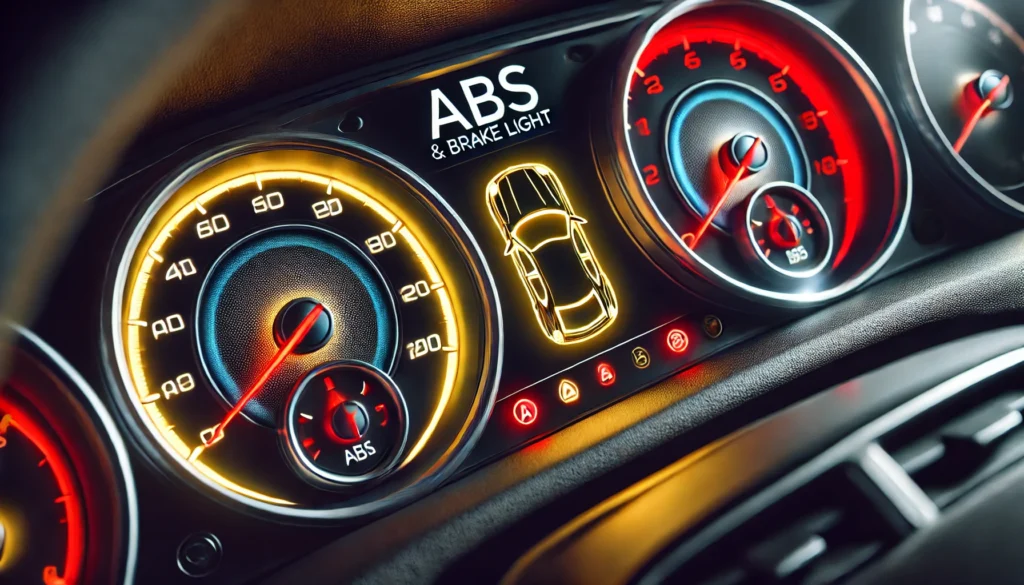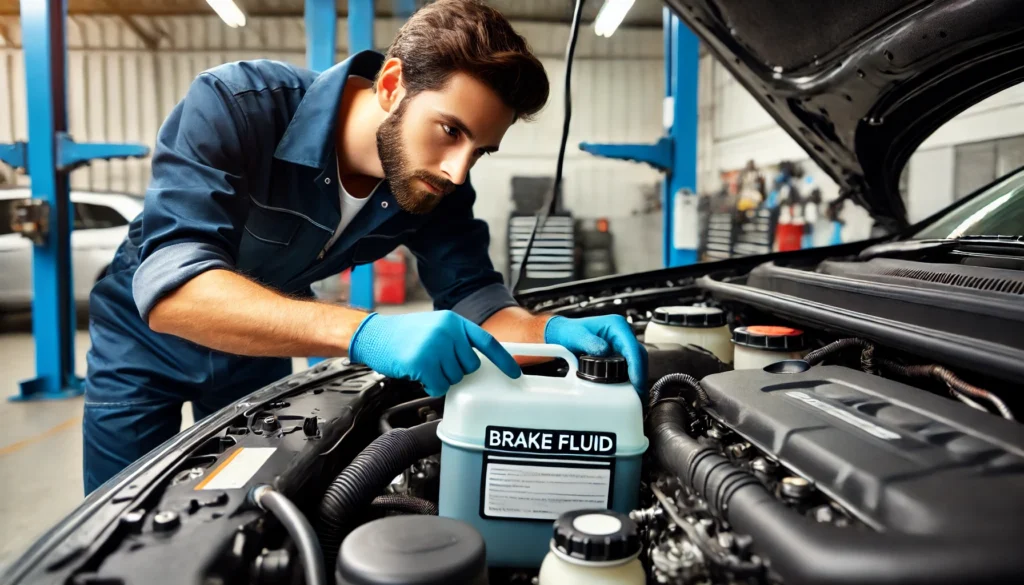When the ABS (Anti-lock Braking System) or brake light illuminates on your vehicle’s dashboard, it indicates a fault that needs prompt attention. Understanding how long these repairs might take can help you plan and manage your vehicle maintenance effectively. The time required to repair ABS and brake light faults can vary depending on the specific issue and the vehicle model.
Common Causes of ABS and Brake Light Faults
- ABS Sensors:
- ABS sensors monitor wheel speed and can become dirty or damaged.
- Wiring Issues:
- Damaged wiring can disrupt the ABS system’s communication.
- ABS Control Module:
- The ABS control module processes data and controls the hydraulic valves.
- Brake Fluid Levels:
- Low brake fluid can trigger the brake light.
- Brake Pads and Rotors:
- Worn brake pads or damaged rotors can affect braking performance.
- Brake System Leaks:
- Leaks in brake lines, hoses, or calipers reduce hydraulic pressure.

Estimated Repair Times for Common Issues
- Replacing ABS Sensors:
- Time Required: 1 to 2 hours
- Details: Replacing an ABS sensor involves diagnosing which sensor is faulty, accessing it (which may involve removing the wheel), and replacing it. After replacement, the system is tested to ensure proper operation.
- Repairing Wiring Issues:
- Time Required: 1 to 3 hours
- Details: Diagnosing and repairing damaged wiring involves tracing the wiring to find the fault, repairing or replacing the damaged sections, and testing the system to confirm the repair.
- Replacing the ABS Control Module:
- Time Required: 2 to 4 hours
- Details: Replacing the ABS control module requires diagnosing the fault, accessing and removing the faulty module, installing the new module, and programming it if necessary.
- Topping Up or Replacing Brake Fluid:
- Time Required: 30 minutes to 1 hour
- Details: Checking and topping up brake fluid is relatively quick. If there’s a leak, locating and repairing the leak, then refilling and bleeding the system, will take longer.
- Replacing Brake Pads:
- Time Required: 1 to 2 hours per axle
- Details: Replacing brake pads involves removing the wheels, calipers, and old pads, installing new pads, and reassembling the components. The brakes are then tested for proper function.
- Resurfacing or Replacing Rotors:
- Time Required: 1 to 3 hours per axle
- Details: Resurfacing rotors is quicker than replacing them. Removing and installing new rotors involves more time due to additional disassembly and reassembly.
- Repairing Brake System Leaks:
- Time Required: 2 to 4 hours
- Details: Identifying and repairing leaks involves finding the source, replacing or repairing the leaking component, and bleeding the brake system to remove air.

Factors Influencing Repair Time
- Vehicle Make and Model:
- The complexity of accessing components varies by vehicle, with some models requiring more time to disassemble and reassemble parts.
- Severity of the Issue:
- Simple issues like low brake fluid take less time to fix compared to complex problems like a faulty ABS module.
- Availability of Parts:
- If parts need to be ordered, this can extend the overall repair time.
- Mechanic’s Expertise:
- Experienced mechanics can diagnose and repair issues more quickly compared to less experienced technicians.
Tips for Efficient Repairs
- Regular Maintenance:
- Regularly check and maintain your braking system to prevent major issues.
- Early Diagnosis:
- Address warning lights promptly to avoid extensive repairs.
- Choose a Reputable Mechanic:
- Select a certified and experienced mechanic to ensure efficient and accurate repairs.
Conclusion
Repairing ABS and brake light faults can take anywhere from 30 minutes to several hours, depending on the specific issue and vehicle model. Understanding the common causes and estimated repair times can help you plan for these necessary fixes. Regular maintenance and prompt attention to warning lights can minimize repair times and ensure your vehicle remains safe and reliable.